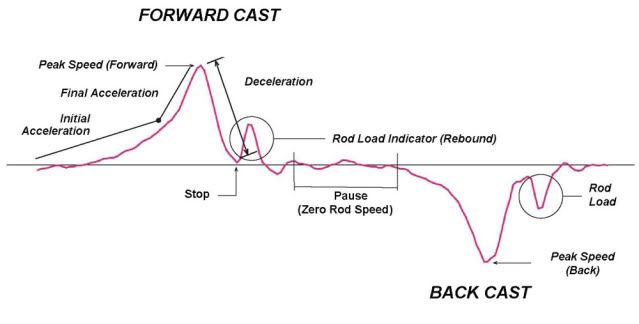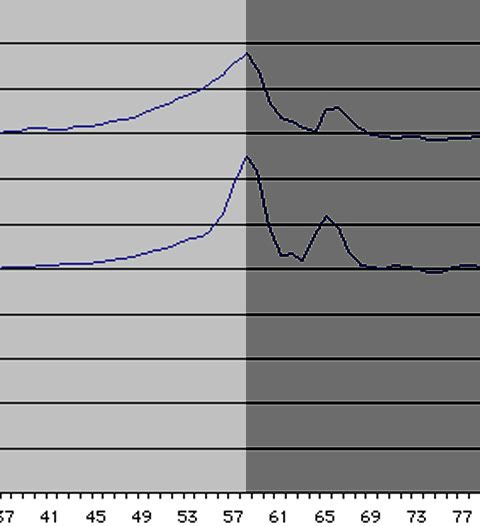I had occasion to post on another BB on why a roll cast collapsed. Some of the replies said that a roll cast was identical to the forward half of a standard in-the-air cast. Well........ yes in some ways but no in others.
Some of you are familiar with the Casting Analyzer.
Explanation of the casting analyzer graph is below:
Jason's Borger posted the difference between a standard overhead cast and a roll cast in terms of rod "butt" rotation. Take a look at his blog for other casting articles. Jason's Blog:
http://fishfliesandwater.com/2011/10...casting-geeks/
Graph from Jason's Blog, the top graph is the stardard cast and the bottom is the roll cast.:
The difference between the two graphs is that the final (accelertion) rod loading for a roll cast must occur over a shorter time and have a higher peak. It requires more energy to make a roll cast because part of the energy is used to both elevate the line and to break the line free of surface tension.
The standard casting instruction for the roll cast has been that it is just the same as the a regular forward cast. We can see that that is not quite correct. If you look at the white side of the graph, the initial front part of the curve (from about 37 to 55 ms) is identical UNTIL the final steep acceleration from 55 to 58 ms. So the final application of power is more sudden and forceful than an in the air cast.
The other thing to notice is that even though the final acceleration is more sudden and rapid, it is still SMOOTH. There are no dips in the acceleration line.
So a roll cast requires a faster rod rotation over a shorter time.






 Reply With Quote
Reply With Quote